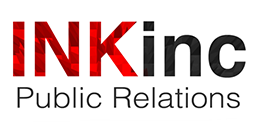So, you’re ready for your big media interview. You or your PR folks have finally convinced a reporter or editor that you’re worth talking to. You’ve got messaging points down. You know the story. You know the outlet. You’re all set. But there’s one big obstacle left that could make or break your interview: your phone. Here are three phone mistakes that could ruin your next media interview.
If you use a cell phone instead of a landline, you could cause problems.

Cell phones are great. You can be anywhere in the world and connect with people in all corners of the globe. But they can also drop out. Or make you sound like you are a robot. Reporters are in a hurry. Reporters don’t have time to deal with dropped calls, calling you back, and not understanding when parts of your sentences cut out.
Use a landline. A good old-fashioned phone with a handset that is plugged into a wall. Some media, particularly radio outlets that will be recording the interview for use on air, will not even do the interview if it’s on a cell phone. In some cases I know that’s difficult. We had a Bay Area tech startup whose CEO had to call more than a dozen different friends and family members before he found a landline. It may be a pain, but there’s a much better chance of a good quality call.
If you use a speakerphone, you could ruin your interview

Some people like to do interviews using speakerphones. They may have additional people in the room who they think can add to the interview. Or they may just want to free their hands up during the call. Bad idea. A speakerphone interview is not a conversation. Inevitably the reporter feels like they are being talked “at” instead of talked “to”. The point is for there to be back and forth, a real conversation. That rarely happens when one of you is on a speakerphone.
If you have multiple people join the call, there are too many cooks in the kitchen

Some PR folks insist on “facilitating” an interview with their clients and reporters. They hop on the call, make introductions, and generally try to help shape the interview while it happens. While the intentions are noble, the end result is rarely helpful to the reporter. To some reporters, it looks like hand-holding; like the CEO can’t be trusted to handle the interview on their own. That may not be the case, but the perception is there. In general, phone conversations should be one on one.
So, hang up the cell phone, put the speakerphone away, and tell your “handler” to go do something else for a few minutes. It could be the difference between an interview with a clear connection or one with a lot of static.
